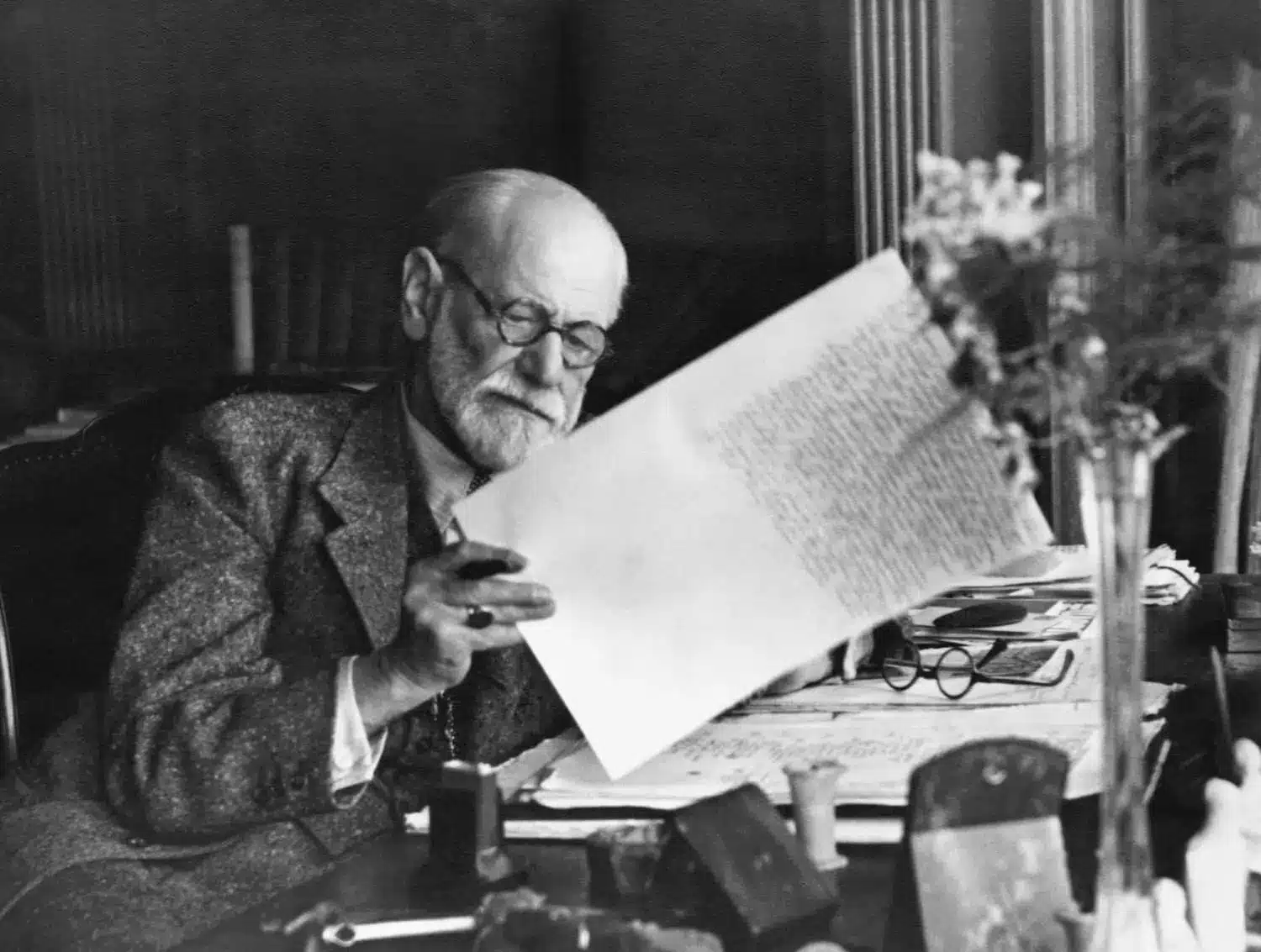The main difference between humanism vs psychoanalysis is how each explains behavior and emotion.
Psychoanalysis studies the unconscious and early life experiences to find hidden causes of distress. Humanism looks at self-awareness, personal choice, and growth.
Psychoanalytic therapy helps people uncover deep feelings, while humanistic therapy focuses on building confidence and balance in the present. Both aim to help people understand themselves, but they take different paths – one looks at the past, and the other looks forward.
Finding the right type of therapy depends on your goals. Anat Joseph, LCSW, PsyA – a Licensed Clinical Social Worker and Psychoanalyst in New York and New Jersey – helps clients explore both methods. She focuses on insight, empathy, and emotional growth.
Key Takeaways
- Psychoanalysis explores hidden emotions and early experiences, while humanistic therapy focuses on awareness and personal growth.
- Both value reflection and a strong therapist–client relationship, but differ in focus – psychoanalysis looks back, and humanism looks forward.
- Humanistic therapy helps people accept themselves and live with more clarity.
- Psychoanalysis is still used today to understand emotions and patterns of behavior.
- Psychoanalysis works best for deep emotional issues, while humanistic therapy helps with self-understanding and balance.
Quick Comparison: Humanistic vs Psychoanalysis
Concept Comparison
See how Psychoanalysis and Humanism differ across focus, therapist role, goals, and view of human nature.
Humanistic and Psychoanalytic Theory Explained
Core Principles of Each Approach
Psychoanalysis teaches that early experiences and unconscious desires shape how we feel and act. Humanistic therapy sees people as capable of growth when they feel understood and supported.
Both approaches believe that awareness and trust help people change. They encourage clients to explore emotions and find meaning in their experiences.
Common Criticisms
Psychoanalysis can take years and may feel too focused on the past. Humanistic therapy can seem too idealistic or vague.
Even so, both continue to help people understand themselves. Each approach offers valuable insight into how we think and feel.
Core Similarities and Shared Ideas
Both methods explore emotions, relationships, and inner life. They rely on trust and reflection between therapist and client.
Psychoanalysis looks for hidden conflicts. Humanism focuses on awareness and personal responsibility. Both help people feel more in control of their emotions and decisions.

How Humanism Differs From Psychoanalysis and Behaviourism
The key difference between psychoanalytic vs humanistic therapy is how they view people. Psychoanalysis studies unconscious motives and early experiences. Humanism, developed by Carl Rogers and Abraham Maslow, focuses on self-growth and meaning.
You can learn more about psychoanalysis training at how to become a psychoanalyst.
Unlike behaviourism, which looks only at actions, humanism and psychoanalysis study thoughts and feelings. Humanism highlights free will, while psychoanalysis focuses on emotional roots.
Self-actualization means reaching your full potential by knowing your values and strengths. Humanistic therapy builds on this idea, while psychoanalysis focuses on uncovering hidden emotions.
Role of the Therapist and Therapy Goals
In psychoanalysis, the therapist helps reveal hidden feelings and inner conflicts. The goal is self-understanding and long-term healing. In humanistic therapy, the therapist is a supportive listener who helps clients find direction and purpose.
Both aim to improve emotional awareness and strength. They differ in focus but share the same goal – helping clients live with understanding and balance.
Historical and Theoretical Roots
Freud’s Influence on Psychoanalytic Thought
Sigmund Freud founded psychoanalysis and introduced ideas such as the unconscious, dreams, and defense mechanisms. He believed that childhood experiences shape adult life. His theories still guide many types of therapy today.
To learn more about Freud’s main ideas, visit the four fundamental concepts of psychoanalysis.

The Emergence of Humanistic Psychology
Humanistic psychology began as a response to Freud and behaviourism. Carl Rogers promoted empathy and acceptance, while Abraham Maslow focused on self-actualization. Humanism encouraged a focus on strengths rather than problems.
How Humanism Challenged Freud’s Ideas
Humanism shifted focus from the past to the present. It teaches that people can grow through awareness and choice, not just by analyzing the unconscious. This positive view still shapes modern therapy.
Applying These Theories in Therapy
Humanistic Therapy and Self-Actualization
Humanistic therapy helps people understand who they are and what they want. It builds confidence through empathy and honest communication. This method works well for those seeking purpose or self-clarity.
Depth Work and the Unconscious Mind
Psychoanalysis explores unconscious patterns that affect behavior and emotions. Clients learn how past experiences shape their reactions. This process leads to better self-understanding and healing.
The unconscious is the hidden part of the mind that influences feelings and choices. Recognizing these patterns helps people change them.
Practical Examples in Modern Therapy
A humanistic therapist helps a client build confidence by exploring values and goals. A psychoanalytic therapist helps a client find emotional patterns rooted in early life. Both methods support self-awareness and growth.
Illustrative Example in Practice
Imagine a client who struggles with confidence. In humanistic therapy, the therapist focuses on present thoughts and feelings. In psychoanalytic therapy, the therapist explores childhood experiences that shaped self-image.
Both aim to help the client understand and grow. Humanism looks forward, while psychoanalysis looks inward.
Comparing Psychodynamic, Psychoanalytic, and Humanistic Approaches
Humanistic vs Psychodynamic – Key Contrasts
Humanistic therapy focuses on the present. Psychodynamic therapy – a shorter form of psychoanalysis – studies the unconscious but is more structured and time-limited. Humanistic therapy encourages change, while psychodynamic therapy seeks emotional insight.
Learn more about this evolution in modern psychoanalysis. Psychodynamic therapy keeps Freud’s main ideas but adapts them for modern life. It offers insight without requiring years of treatment.
Psychodynamic vs Psychoanalytic – Core Differences
Psychodynamic therapy is shorter and focuses on key issues. Psychoanalysis goes deeper, exploring long-term emotional patterns and personality development.
How Behaviour Therapy Differs From Both
Behaviour therapy focuses on action and habit change. Unlike humanistic vs psychoanalytic therapy, it does not explore meaning or emotions. Each approach suits different needs – one focuses on doing, the other on understanding.
Psychoanalysis in Modern Practice
Why Psychoanalysis Is Less Common Today
Psychoanalysis is time-consuming and often costly. Still, its ideas remain a strong influence in today’s therapy.
Accessibility and Changing Mental Health Models
Modern therapy often mixes humanistic and psychoanalytic methods into shorter, practical sessions. This allows more people to benefit from both depth and efficiency.
How Psychoanalytic Ideas Still Influence Therapy
Even short-term therapy uses psychoanalytic ideas like transference, attachment, and emotional awareness. These continue to guide how therapists understand relationships and emotions.
Choosing the Right Therapeutic Approach
When to Consider Psychoanalytic Therapy
Psychoanalysis is best for people who want to explore long-term emotional issues or repeating patterns. It helps uncover the unconscious and understand deep-rooted feelings.
When Humanistic Therapy Works Best
Humanistic therapy helps people seeking purpose or balance. It encourages awareness and acceptance, helping clients connect with their values and emotions.
How to Find a Qualified Therapist
Finding the right therapist is key. Anat Joseph, LCSW, PsyA, combines humanistic and psychoanalytic methods in her practice in New York and New Jersey.
She helps clients understand their emotions, strengthen relationships, and grow.
About the Author
Professional Credentials and Clinical Experience
Anat Joseph, LCSW, PsyA, is a Licensed Clinical Social Worker and Certified Psychoanalyst. She helps children, teens, and adults manage anxiety, depression, and relationship issues.
Consider scheduling an appointment with Anat Joseph, LCSW, PsyA, to discuss your goals and begin your journey toward emotional well-being.
FAQs on Humanistic and Psychoanalytic Therapy
What Are Their Main Similarities?
Both focus on understanding emotions and building awareness. The bond between therapist and client is essential in both.
Why Is Psychoanalysis No Longer Popular?
It takes time and commitment, but its core principles still guide many therapies.
Which Therapy Focuses on Self-Growth?
Humanistic therapy emphasizes personal development and helps clients reach their potential.

